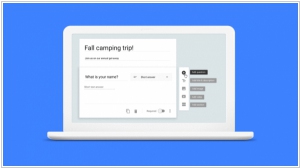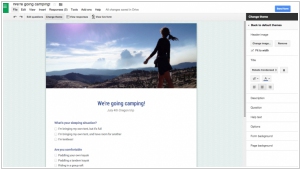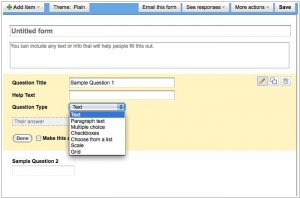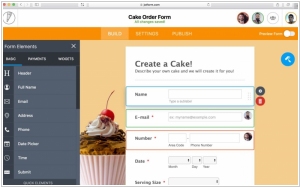Google Forms vs JotForm
July 25, 2023 | Author: Sandeep Sharma
See also:
Top 10 Online Survey software
Top 10 Online Survey software
Google Forms and JotForm are both popular online form builders, each offering unique features and functionalities. Google Forms is a free and straightforward tool provided by Google, seamlessly integrated with Google Drive and other Google Workspace applications. It is well-suited for simple data collection and basic form needs, with a user-friendly interface that allows for quick form creation. On the other hand, JotForm is a comprehensive online form builder that offers a wide range of advanced features, including extensive form customization options, conditional logic, payment integration, and robust data reporting and analytics. JotForm is known for its ease of use, drag-and-drop form building capabilities, and the ability to create complex forms without any coding knowledge. It caters to individuals, businesses, and organizations of all sizes, making it a preferred choice for those seeking a versatile and feature-rich form building solution.
See also: Top 10 Online Survey software
See also: Top 10 Online Survey software
Google Forms vs JotForm in our news:
2017. Google Forms get intelligent response validation

Google has introduced an update to its online survey building service, Google Forms. This update brings a range of new features, including intelligent response validation, which suggests appropriate response validation options for different fields. For instance, when requesting an email address, Forms will recommend selecting the "Accept emails only" option. Similar suggestions are provided for fields such as URLs and age. Another addition is the ability for Forms users to request file uploads from individuals outside their company. However, this feature is only available if both the user's company and the respondent's company permit cross-domain file sharing in Google Drive. Additionally, Google has introduced a new question type called the checkbox grid, enabling respondents to select multiple options presented in a table format. Forms now also offer settings that can be applied to all new forms, allowing users to choose, for example, to always collect email addresses. Furthermore, users can easily reorder sections with just a few clicks.
2014. Google Forms expanded functionality thanks to add-ons

Online form and survey creation tool Google Forms now supports add-ons that enhance the functionality of your surveys. These add-ons, developed by Google's partners, provide additional features similar to those available for Docs and Sheets. With add-ons, you can enhance your survey-building experience by incorporating useful extras. For instance, you can set an end date for your survey, send customized emails based on responses, store frequently used lists of choices for questions, and more. One example is the formLimiter add-on, which enables you to automatically close your survey after reaching a maximum number of responses or at a specific date and time. Another add-on called Ultradox Trigger allows you to generate customized emails, reports, invoices, newsletters, and more using the information provided by respondents in your form.
2014. Google Forms adds professional themes

Finally, Google Forms, the popular service for creating online forms and surveys, has received a professional revamp with the introduction of themes. Users now have the ability to select from a range of professionally designed custom themes, featuring images related to various social activities such as sailing, biking, camping, and more. Additionally, users can choose from a selection of generic images like party banners, cars, books, and more. Furthermore, users have the flexibility to personalize the themes by selecting their preferred fonts and colors, choosing a background, and even uploading their own photos. For simpler forms that do not require a banner image, there are also minimalistic themes available with a white background and colorful fonts, providing a visually appealing and well-designed look and feel.





